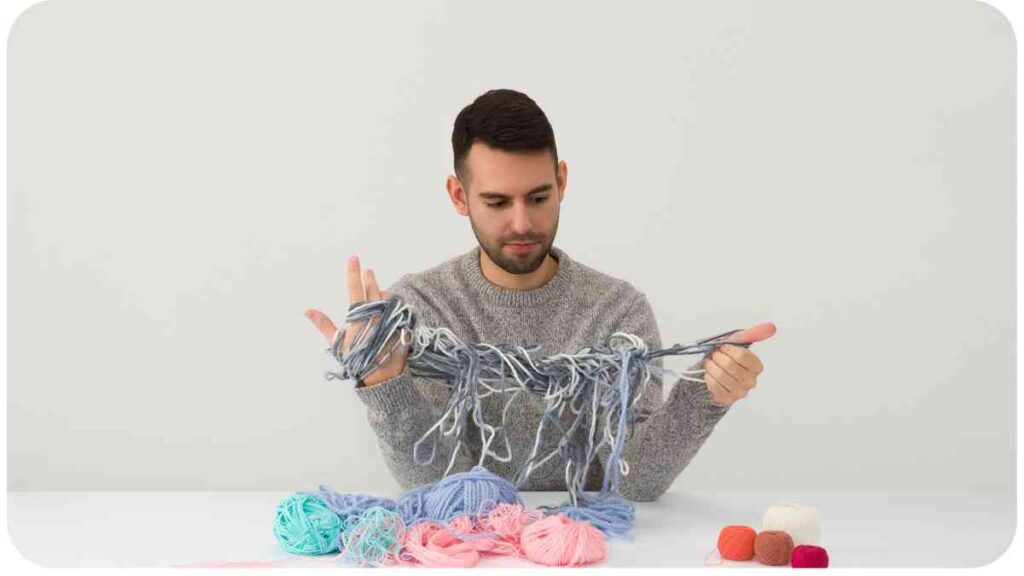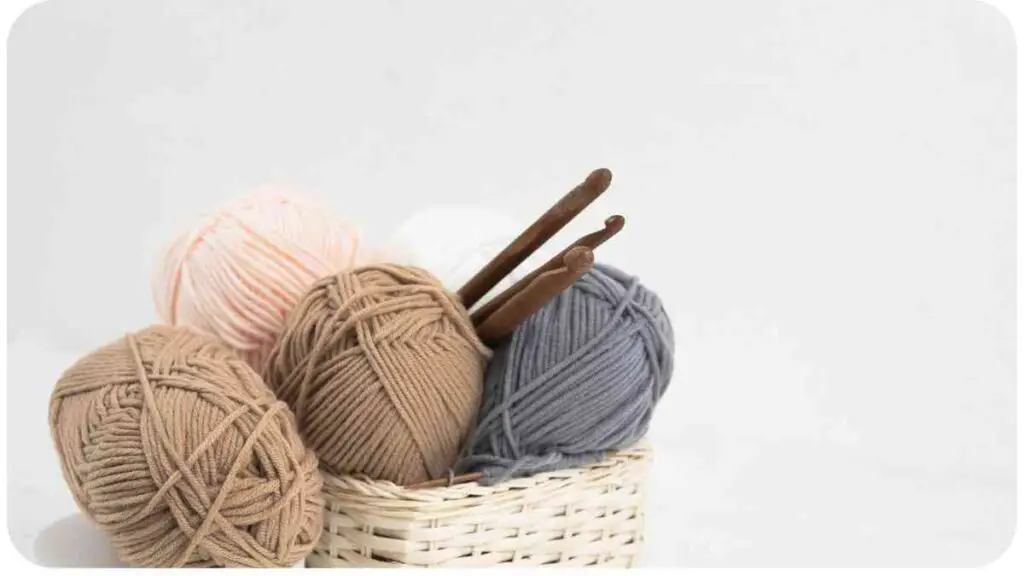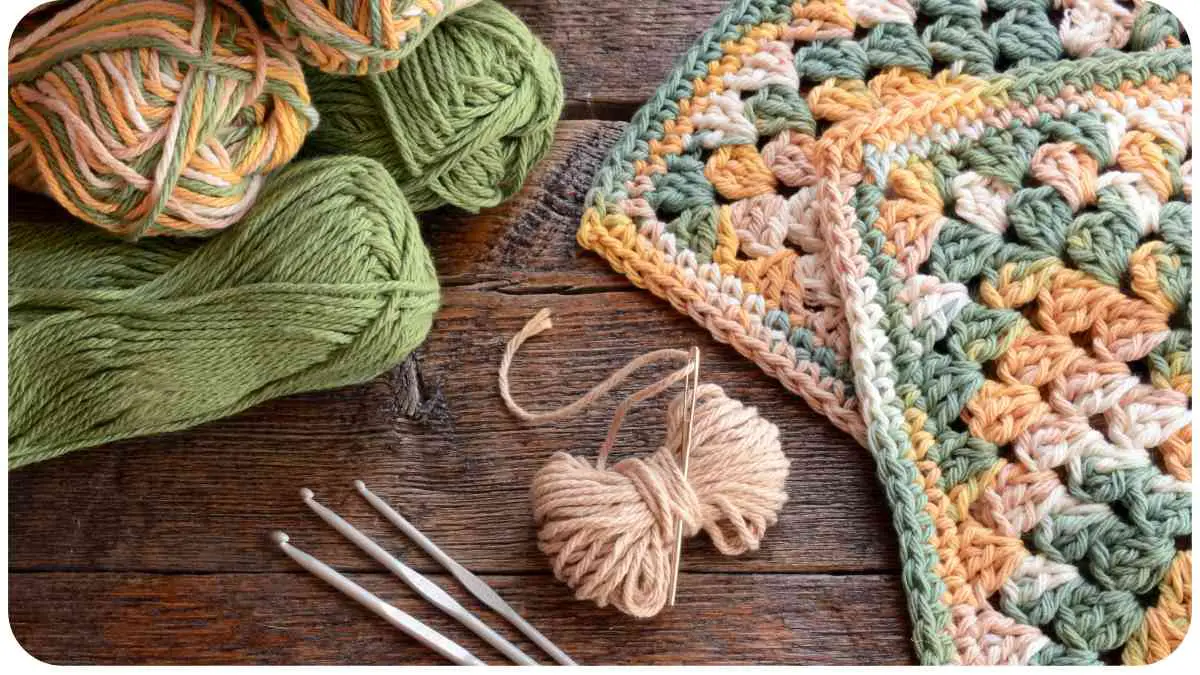Crochet enthusiasts understand the significance of mastering various techniques, one of which is the slip knot. The slip knot serves as the foundational element in crochet, initiating almost every project.
In this comprehensive guide, we will explore the slip knot in detail, discussing its importance, creation process, tightening techniques, common mistakes, troubleshooting tips, and more. Additionally, expert insights will shed light on why the slip knot should be an essential skill in every crocheter’s repertoire.
| Takeaways |
| Mastering the slip knot is essential in crochet. |
| The slip knot sets the foundation for every crochet project. |
| Proper tension in the slip knot ensures consistent stitches. |
| Different techniques can be used to adjust slip knot tension. |
| Understanding slip knot variations adds versatility to projects. |
2. What is a Slip Knot?
The slip knot is a simple knot that allows the yarn to be held securely on the crochet hook. It acts as a starting point for all crochet projects, ensuring that the yarn has a firm foundation from which to work. By having an understanding of this versatile knot, crocheters can embark on various projects with confidence and ease.
Unlock the world of crochet with essential stitches! This comprehensive guide introduces fundamental techniques, providing a solid foundation for your crochet journey. Explore various stitches and gain confidence in creating beautiful crochet projects.
3. The Importance of the Slip Knot in Crocheting

The slip knot lays the groundwork for the entire crochet project. Its proper creation and placement directly influence the tension, stability, and appearance of the final product.
A well-executed slip knot sets the stage for even stitches, preventing unraveling and ensuring a professional finish. Moreover, it facilitates the process of adding new colors or joining yarns seamlessly.
4. Creating the Slip Knot
To create a slip knot, follow these simple steps:
Table: Step-by-step process of creating a slip knot
| Step | Instructions |
| 1 | Make a loop with the yarn, crossing the end over the main part. |
| 2 | Pull the end through the loop, creating a second loop. |
| 3 | Adjust the size of the loop by pulling the free end upward. |
| 4 | Gently tug both ends of the yarn to tighten the slip knot. |
Once you have mastered this technique, you will be well on your way to crocheting success.
5. Techniques for Tightening the Slip Knot
Achieving the desired tension in a slip knot can be challenging. Different techniques can be used to tighten the slip knot effectively. Explore the pros and cons of each method in the table below:
Dive into the rich tapestry of crochet stitch techniques! This resourceful guide offers insight into a variety of stitches, helping you expand your crochet repertoire. Enhance your skills and add versatility to your crochet creations.
Table: Different methods to tighten the slip knot with pros and cons
| Technique | Pros | Cons |
| Pulling the tail end | Quick and easy | May cause the loop to become too tight or uneven |
| Pulling the working yarn | Provides better control over tension | Can potentially create an uneven loop |
| Pulling both ends simultaneously | Balances tension on both ends | Requires additional dexterity |
| Pulling the slip knot itself | Adjusts the tension directly on the knot and its surroundings | May accidentally undo the slip knot if excessive force is used |
Experiment with different methods and find the one that suits your crocheting style best.
6. Common Mistakes to Avoid

In the world of crochet, even the slip knot can sometimes pose challenges. By being aware of common mistakes and learning how to avoid them, you can save time and frustration. Here are a few mistakes to watch out for:
- Creating a slip knot that is too tight, which can lead to difficulty working subsequent stitches.
- Leaving the loop too loose, causing the slip knot to slide off the hook.
- Placing the slip knot too close to the end of the yarn, risking unraveling.
Awareness of these common errors will help you achieve a better slip knot and enhance your overall crochet experience.
Master the art of crochet magic with a step-by-step guide to creating the perfect magic ring. This essential technique lays the foundation for seamless and professional-looking crochet projects. Elevate your craftsmanship with this detailed tutorial.
7. Tips for Using the Slip Knot in Crochet Projects
The slip knot’s versatility extends beyond its fundamental role. Consider these tips to maximize your usage of the slip knot in different crochet projects:
- Use a contrasting colored yarn for the slip knot when working with multiple colors to easily identify and hide it within the stitches.
When working on intricate patterns or stitches that require careful tension, take extra care when tightening the slip knot to ensure the stitches don’t become too tight or too loose.
- If you find that your slip knot consistently ends up too tight, try using a larger crochet hook to create the initial loop. This will give you more room to adjust the tension and prevent the knot from becoming constrictive.
- On the other hand, if your slip knot tends to be too loose and slips off the hook, you can try using a smaller hook size or pulling the working yarn tighter before tightening the knot. Practice and experimentation will help you find the right balance.
- Remember to be gentle when tightening the slip knot, as excessive force can lead to the knot unraveling or distorting. A moderate amount of tension coupled with finesse will yield the best results.
- If you’re working on a larger project that requires multiple skeins or balls of yarn, join the new yarn to the slip knot rather than starting a new one. This method ensures a secure and seamless transition between yarns.
Incorporating these tips into your crochet practice will enhance your slip knot technique and elevate the quality of your projects.
8. How to Undo a Slip Knot
From time to time, you might need to undo a slip knot in crochet. Whether you’ve made a mistake in the initial knot or need to frog your work, it’s essential to know how to undo the knot without damaging the yarn or your project. Follow these steps to gracefully undo a slip knot:
Navigate the world of crochet effortlessly with tips and tricks for using crochet patterns. This guide empowers you to interpret and follow patterns effectively, ensuring successful and enjoyable crochet projects. Unleash your creativity with confidence.
Table: Steps to undo a slip knot gracefully
| Step | Instructions |
| 1 | Gently loosen the tension on the knot by pulling the working yarn outward. |
| 2 | Slide the crochet hook through the loop, holding the knot in place. |
| 3 | Slowly pull the working yarn from the knot, unraveling it without force. |
| 4 | Ensure the remaining yarn is untangled and ready for a new slip knot. |
Remember to take your time and be patient while undoing a slip knot. Rushing the process can result in snags or knots that are challenging to fix.
9. Slip Knot Variations
While the basic slip knot is the most commonly used in crochet, variations exist that can add a unique touch to your projects. Different styles of slip knots can create varying textures, decorative elements, or functional enhancements. Compare the following slip knot variations in the table below:
Table: Comparison of various slip knot styles
| Slip Knot Variation | Description |
| Standard Slip Knot | The traditional method used in most crochet projects. |
| Slip Stitch Slip Knot | A slip knot that incorporates a slip stitch, creating a more decorative appearance. |
| Adjustable Slip Knot | A slip knot that allows for easy adjustment of tension after it is completed. |
By incorporating different slip knot variations into your patterns, you can add visual interest and personal flair to your crocheted items.
10. Troubleshooting Slip Knot Issues
Sometimes, despite our best efforts, slip knot issues can arise. Identifying and troubleshooting these issues promptly can save you time and frustration. Refer to the table below for common slip knot problems and their solutions:
Embark on your knitting journey with this quick and easy guide. Whether you’re a novice or seasoned knitter, this resource provides essential insights into launching your knitting projects. Get ready to create beautiful and satisfying knitted items.
Table: Common problems with slip knots and their solutions
| Problem | Solution |
| Knot slips off the hook immediately | Ensure the knot is tight enough and double-check the loop size. |
| Knot is too tight or too loose | Adjust the tension gradually as you create the knot, finding the right balance. |
| Knot becomes distorted or uneven | Pay attention to the alignment of the yarn strands and the tightening process. |
Taking the time to troubleshoot slip knot issues will help you maintain consistency and quality in your crochet projects.
11. Expert Insights: Why Mastering the Slip Knot is Essential
As a seasoned crocheter, I have repeatedly witnessed the importance of mastering the slip knot. Not only does it set the foundation for every project, but it also ensures a successful and enjoyable crocheting experience. The slip knot’s ability to hold the yarn securely while maintaining the desired tension is crucial in achieving consistent and professional-looking stitches.
Moreover, the slip knot serves as a gateway to various techniques in crochet, such as joining colors, creating complex stitches, and forming intricate patterns. By honing your slip knot proficiency, you open the door to endless creative possibilities in your crocheting endeavors.
12. Conclusion
The slip knot is more than just an initial step in crochet it is the cornerstone of every project. By understanding its importance and mastering its creation, tightening, and troubleshooting techniques, you will be equipped to embark on a wide range of crochet projects with confidence and skill.
Further Reading
Here are some additional resources you can explore to deepen your understanding of the slip knot in crochet:
- Sarah Maker: Sarah Maker’s website offers a detailed tutorial on creating a slip knot, along with helpful tips and tricks to improve your technique.
- Treasurie: Treasurie’s blog provides a step-by-step guide on making a slip knot in crochet, accompanied by clear visuals and concise instructions.
- The Spruce Crafts: The Spruce Crafts offers an informative article that explains the process of creating a crochet slip knot, focusing on clarity and simplicity.
Feel free to explore these resources to gain more insights and knowledge about the slip knot in crochet.
FAQs
Here are some frequently asked questions about the slip knot in crochet:
How do I know if my slip knot is tight enough?
The slip knot should be tight enough to secure the yarn on the hook without being too constrictive. It should allow for smooth movement of the yarn but not easily come undone. Adjust the tension gradually while creating the knot until you find the desired tightness.
Can I reuse the yarn from an undone slip knot?
Yes, you can reuse the yarn from an undone slip knot. Take care to untangle the yarn and ensure there are no knots or kinks before attempting to create a new slip knot for your project.
What should I do if my slip knot keeps slipping off the hook?
If your slip knot consistently slips off the hook, try tightening the knot further or adjusting the loop size. Alternatively, you can switch to a smaller crochet hook to create a tighter slip knot.
Is it possible to create a slip knot using a different technique?
Yes, there are various techniques to create a slip knot in crochet. Some crocheters prefer alternative methods, such as the slip stitch slip knot or the adjustable slip knot, for different effects or added functionality. Experiment with different techniques to find the one that suits your preferences and project requirements.
Can I use a slip knot in other crafts aside from crochet?
Absolutely! While the slip knot is primarily associated with crochet, it is also commonly used in other crafts like knitting, macramé, and even general household tasks. Its versatility and simplicity make it applicable in various creative and practical settings.

My name is Hellen James, and I’m a crochet and knitting expert. I’ve been crocheting since I was just a kid, but I started taking it seriously when I realized that it was a great way to de-stress and relax. Now that I have kids of my own, I love teaching them how to do it too!

